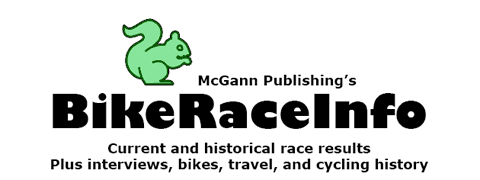

Keep Your Head About You: Helmet Check Time
Lisa C. Colvin, Ph.D., FACSM
Elite Coach, Peaks Coaching Group
Back to Training and Fitness articles index page
Les Woodland's book Sticky Buns Across America: Back roads biking from seat to shining sea is available as an audiobook here. For the print and Kindle eBook versions, just click on the Amazon link on the right.
Lisa Colvin writes:
As many of you are logging epic miles and the race season is in full swing, now is a great time to discuss the much forgotten HELMET. Checking your helmet can be the difference between you walking/riding away from a crash or a potential brain injury.
Check my helmet? You might be saying “Come on Lisa, nothing really bad could possibly happen to me; I ride with safe people and have only crashed once”. My long time training partner Keith Breaux (exercise physiologist, ER nurse and cat 1 racer) has a saying: “There are 2 types of cyclist: those who have crashed and those that will”. Bicycling helmets are as important to your cycling health as sunscreen and great coaching.
The USA Cycling and Triathlon national governing boards have strict policies on helmet quality and usage. The 2012 USA Cycling Rule Book states that helmets must be worn “at all times when participating in or preparing for an event”. When training or racing, riders “at all times, including club rides shall wear a securely fastened helmet that meets either the USA DOT helmet standards or the U.S. Consumer Product Safety Commission (CPSC) stand for bicycle helmets”. (USA Cycling Rule Book, 2012, pg. 235-236).
Do not remove any labels inside the helmet as they must be present when asked to be viewed by an official. Many states require riders under 16 to wear helmets while on a bike. Merely wearing a helmet and clamping the strap is not enough to protect you from brain injury. Helmet fit is critical to the success of the helmet’s function while on a ride. The below are recommendations from the League of American Bicyclists (2012):
Wear a helmet
- A helmet is your last line of defense in an accident; never ride without one
- Helmets can reduce serious head injuries by 85% in a crash
- A helmet will not protect your head if it is not properly fit
Helmet Fit
- Make sure that the helmet fits on top of the head, not tipped back
- Always wear a helmet while riding a bike, no matter how short the trip
- After a crash or any impact that affects your helmet, replace it immediately.
Shell and pads
- Find the smallest helmet shell size that fits over your head
- Helmet pads should not be used to make a helmet that is too big fit your head
- Leave about two-fingers width between your eyebrows and the front of the helmet
Straps
- The straps should be joined just under each ear at the jawbone
- The buckle should be snug with your mouth completely open
- Periodically check your strap adjustment; improper fit can render helmet useless
Ventilation
- In general, the more vents the better; improper ventilation can cause overheating
- Helmets with good ventilation can actually be cooler than riding with no helmet at all
- More vents usually mean a higher priced helmet; buy one that you are proud to wear
Colors
- Helmets come in all different colors in different models; buy a highly visible color
- Shell color does not affect the temperature of the helmet against your head
- Pick a color that encourages you or your kids to wear it
When a helmet functions properly, they most likely will crack upon impact. This is exactly what you want to happen. If you crash and your helmet touches the ground, the safest thing to do is to buy a new one or use the manufacturer’s replacement service, even if you see no visible damage. Microfractures compromise the integrity of your helmet and are as dangerous as an obvious break.
Below is a helmet from my recent training ride. A rider crashed and fractured the helmet (yes, the red stuff is blood from a head laceration NOT in or around the helmet).

Helmet proper usage became very clear to me during this ride. Everyone was so hot that it would have been very easy to leave the helmet in the car (in Louisiana that day, it was 97 degrees Fahrenheit with 76% humidity!)
Riding along in a pack of 20 riders, an attack began on a small hill. Unfortunately, I heard the dreaded bike parts hitting pavement and sounds of human pain behind me. My friend had just crashed as a car pulled out in front of him and sent him over the top of his bike and the car!
I am happy to report that this horrific crash ended in a very happy ending and my friend returned to cycling several weeks later due to other crash related injuries (his head and brain were just fine!!)

We all ride our bikes for different reason. Safety is so important, not just for you but it also serves as peace of mind for others that love you.
Remember the Ten Commandments of Bicycling:
I. Wear a helmet for every ride and use lights at night
II. Conduct an ABC Quick Check before every ride
III. Obey traffic laws: ride on the right, slowest traffic farthest to right
IV. Ride predictably and be visible at all times
V. At intersections, ride in the right-most lane that goes in your direction
VI. Scan for traffic and signal lane changes and turns
VII. Be prepared for mechanical emergencies with tools and know-how
VIII. Control your bike by practicing bike handling skills
IX. Drink before you are thirsty and eat before you are hungry
X. Have fun
(League of American Bicyclists, 2012)








